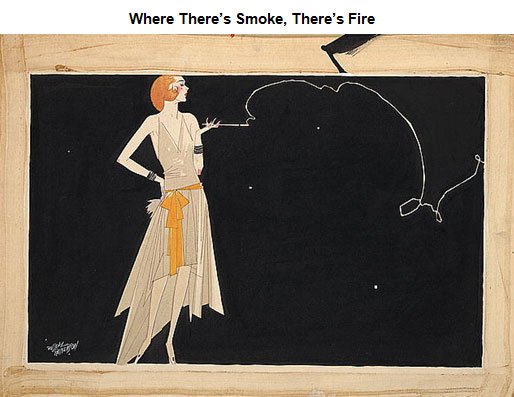
Source: Cartoon Drawing, Where there’s smoke there’s fire

Source: Cartoon Drawing, Where there’s smoke there’s fire
The 1920s was a decade of change for the United States. There were changes that occurred in every aspect of American life. The painting, Where There’s Smoke, There’s Fire, is an example of how the changes of this decade impacted women. In the painting, artist Russell Patterson illustrates the changing roles of women as indicated by fashion and the open habit of smoking cigarettes. This painting spoke volumes about the United States coming to crossroads of a country struggling with tradition and modernism.
Changes could be found in virtually every facet of American life. First, there were economic changes. The American economy had become an economy based on consumerism. The production of goods and services was based on consumer demand. Businesses and corporations took note of the demands of consumers and developed ways to meet them. The economy’s decline in the 1920s contributed to the failure of the economy in the 1930s.
Second, the social changes during the 1920s made an indelible mark on American society for years to come. Gender roles, race relations, and organized crime were just a few of the social issues of the 1920s.
Third, there were political changes in the 1920s that impacted the immediate futures of the Americans. The presidents who served the United States during the 1920s provided Americans with colorful, and sometime scandalous, terms that called into question the power of the president, at times.
The 1920s was called the Roaring Twenties because the changes were powerful, like a lion’s roar. The 1920s was also called the Jazz Age, the Age of Tolerance, or the Age of Nonsense. The various terms attributed to this decade were indicative of a wide range of changes of this era in the United States history.
![]() Click on the images below to preview what will be discussed in this lesson.
Click on the images below to preview what will be discussed in this lesson.
In the next section, you will examine the economic issues that surrounded the Roaring Twenties.
Sources for images used in the interactive, as they appear, top to bottom: